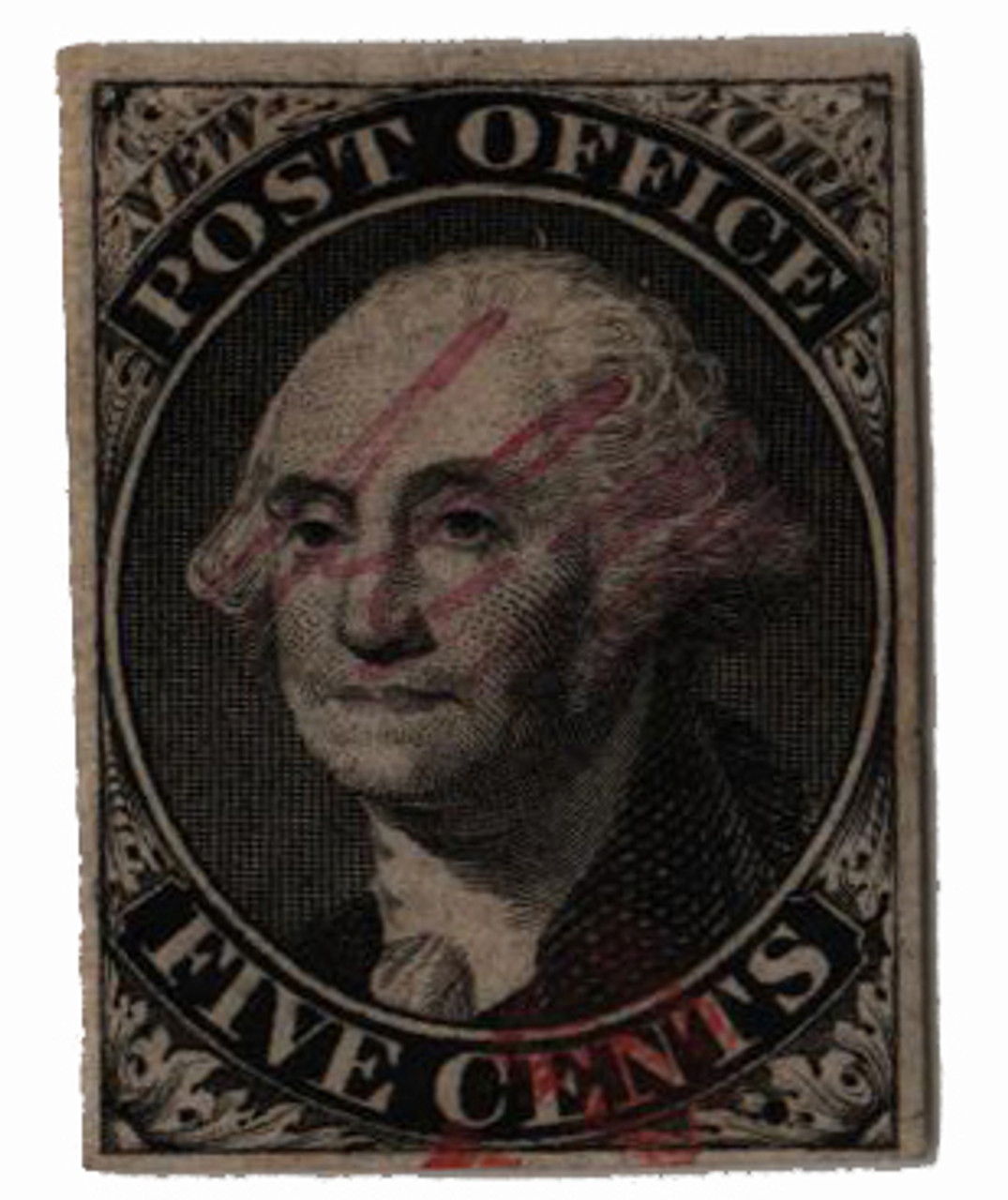On July 1, 1845, US Congress established uniform postal rates, giving rise to the creation of Postmaster Provisional stamps.
In 1840, Great Britain issued the world’s first adhesive postage stamp, the Penny Black, and established uniform postage rates. Up until that time, there were many different postage rates in different jurisdictions, which made it difficult to determine the correct fees before mailing a letter, leaving the recipient responsible with paying for the letter’s delivery.
The US watched closely to see how well these uniform rates worked in Great Britain. After witnessing the success, Congress passed an act on March 3, 1845, establishing uniform postal rates. While there was some discussion of creating stamps, that authorization was left out of the act. It would be exactly two years before they passed another act authorizing the postmaster-general to issue stamps for use all over the country.
The 1845 act laid out specific rates: “For every single letter in manuscript or paper of any kind by upon which information shall be asked or communicated in writing or by marks designs, conveyed in the mail, for any distance under 300 miles, five cents; and for any distance over 300 miles, ten cents; and for a double letter there shall be charged double these rates; and for a treble letter, treble these rates; and for a quadruple letter, quadruple these rates; and every other letter or parcel not exceeding half an ounce in weight shall be deemed a single letter, and every additional weight of half an ounce, shall be charged with an additional single postage. All drop letters place in any post office, not for transmission through the mail but for delivery only, shall be charged with postage at the rate of two cents each.”
Other postmasters soon followed suit, providing their own distinct stamps for pre-payment of mail. In all, 11 different post offices around the country produced their own postmasters’ provisionals. The postmasters recognized these stamps as proof the postage had been paid, and often signed their initials on them to legitimize their use.New York’s postmaster Robert H. Morris saw these uniform rates as a valid reason to make his own stamps for the pre-payment of mail. With no objections, he assumed the printing cost and arranged to have the stamps printed by the firm of Rawdon, Wright, and Hatch. The quality of their work was so impressive the federal government awarded its 1847 contract for US #1 and #2 to the firm without asking for bids from competing printers.
Morris’s stamps were first issued in July 1845. Only about 5,500 were produced, making them quite rare today. He also sent some of his stamps to postmasters in Boston, Philadelphia, Albany, and Washington, asking that the stamps be seen as unpaid until they reached him in New York. The stamps were to be sold for letters traveling to or passing through New York.
With the issue of America’s first federal postage stamps on July 1, 1847, postmasters’ provisionals were no longer needed. Today, they are among the major rarities of the philatelic world.
Click here for more Postmasters’ Provisionals.
| FREE printable This Day in History album pages Download a PDF of today’s article. Get a binder or other supplies to create your This Day in History album. |
Discover what else happened on This Day in History.






Very interesting story which I did not know. Again thank you Mystic.